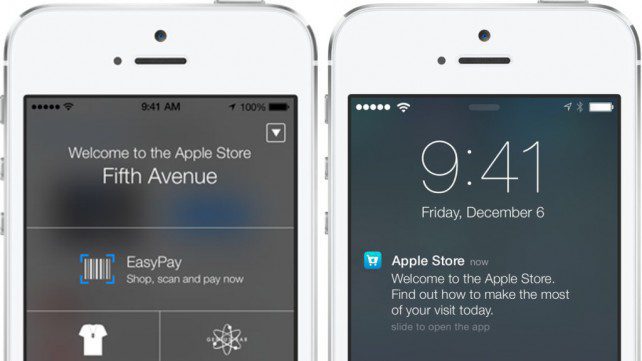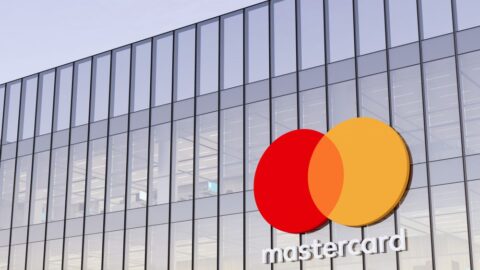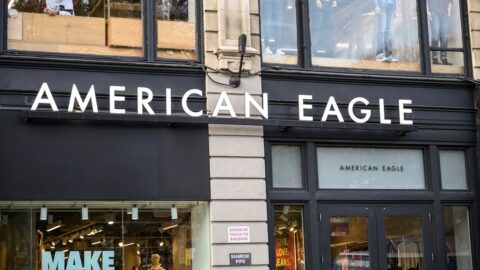A shifting customer experience with an increasing emphasis on mobile technology has motivated retailers to adopt new solutions that supplement their in-store offerings. A number of retailers have implemented devices equipped with Bluetooth Low Energy (BLE) technology, more commonly known as beacons, in their brick-and-mortar locations.
Apple already has rolled out its own beacon technology — called iBeacon— across all of its 254 U.S. stores. Additionally, mobile shopping application provider Shopkick deployed the technology in 100 American Eagle locations and two Macy’s locations.
Beacons are hardware sensors designed to wirelessly communicate and transmit data with mobile devices (and other beacons) within a specific proximity. Due to these wireless capabilities, the beacons can be utilized for a bevy of in-store purposes, including geolocation, targeted messaging and shopper analytics.
{loadposition TSHBAIAA022014} Although the technology delivers automatic communications to shoppers, beacons are still in the test-and-learn stage. “Since the technology operates in the background, consumers don’t have to remember to go through the action of opening an app while walking around the store,” explained Rob Murphy, VP of Marketing at Swirl Networks, an in-store mobile marketing platform provider. “The retailer can send information in the form of a push alert to a person in the store. It’s direct and it’s a real-time communication mechanism, but the question is going to be: Can retailers deliver enough value in that exchange that consumers are going to like it?”
In order for consumers to accept beacon technology, retailers need to promote the anticipated value. Delivering relevant offers and creating a fun and engaging shopping experience are two ways merchants can deliver this value, noted Bret Cunningham, President and COO at retail analytics platform developer BestFit Mobile. “The same things that Amazon has done effectively in the e-Commerce process, we want to do for customers in the physical environment.”
Beacons: A True Value Proposition
From an investment standpoint, beacon technology involves very little monetary risk, according to industry experts. Startups Estimote, Twocanoes Software and Roximity presently offer three-beacon packages in the $100 range, while Gimbal proximity beacons produced by Qualcomm Retail Solutions are available for as little as $10 to $20 per beacon when purchased in bulk. Perhaps more importantly, battery power ranges from at least six months to beyond two years, depending on the product.
“The ROI can be quickly justified with beacons,” said Preston Reed, CEO of Footmarks, a digital intelligence company planning to release beacons in March 2014. “For instance, a high-end retailer could sell one product and pay for our system. For a fast food chain, if they sold $2 burgers to 200 people, then they paid for our system. It’s inexpensive, and that’s the key for this technology.”
Maximizing Value With Retail Analytics
Many retailers looking to deploy beacon technology already have implemented other solutions that track customer engagement. In a way, beacons represent the next step in the evolution of the tracking process, now attempting to understand what customers want at the individual level.
But in order to get the most out of beacon strategies, retailers must combine the technology with related analytics. “[BLE] has to be used in combination with great CRM systems, databases and analytics to help trigger those personalized experiences,” said Andrew Morris, CEO of retail consulting firm Morris Advisors. “Beacons by themselves can’t make those great experiences happen.”
Some of the personalized communications beacons can help deliver include product advertisements, coupons, loyalty programs, contests and product information. To further promote loyalty and fun, merchants could promote programs such as scavenger hunts and interactive games using beacon technology.
“The days of the mom-and-pop store and the corner grocer who knew your name when you walked in, generally, are long gone for big retailers,” explained Eric Newman, VP of Products and Marketing at Digby, a location-based analytics platform provider. “This represents an opportunity to deliver something that’s more personalized and high-touch, even at a scale where you don’t have a lot of employees.”
But while personalization directly benefits the shopper, other aspects of beacon technology can help the business. Using geolocation capabilities, beacons can detect any mobile device within a close range, enabling retailers to identify: peak traffic times, checkout line length, number of associates presently in-store and product location. While this technology is often compared to GPS, BLE’s indoor accuracy makes the beacons more suitable in a retail environment.
Qualcomm’s Gimbal Context Awareness Platform, in conjunction with its proximity beacons, uses a precise version of geolocation known as geofencing, in which retailers can access information around a virtual perimeter of the store.
“Geofencing actually helps retailers have better engagement with their customers, because they’re going to get less false positives on the outer edges or on adjacent properties,” said Kevin Hunter, Sr. Director of Product Management for Gimbal. “As you go inside the particular perimeter, that’s when you can use the beacons, which can be placed at the front door, at the checkout, at the shelf level and at the product level.”
Suja Juice, an organic juice product sold in Whole Foods Market, is leveraging the Qualcomm Gimbal beacon to improve customer interaction with the Suja Juice app. This rollout — one of the first retail beacon implementations for Qualcomm — was announced at the 2014 NRF Big Show.
Boost The Bottom Line With Price Comparison Capabilities
More than half (53%) of smartphone shoppers already are comparing prices while in the store, according to research from the Google Shopper Marketing Agency Council and M/A/R/C Research. Additionally, smartphone shoppers who shop at least once a week spend 25% more in-store compared to occasional smartphone shoppers. Offering the ability to price-compare in-store will help retain customers and build brand loyalty. To help facilitate this activity, BestFit Mobile’s offspring, Shelfbucks, is leveraging beacon technology to allow shoppers to compare product prices while in the store.
Price comparison via beacons could be a game-changer for customers with shopper anxiety who might be skeptical of in-store prices, according to Erik McMillan, CEO of Shelfbucks and Co-Founder of BestFit Mobile. “If a shopper is at Best Buy or Walmart and he’s trying to buy a television, he can get nervous because he thinks he might not get the best deal that he could get online,” McMillan noted. “If you can just wave your phone at a beacon, that immediately de-stresses you and tells you how much money can be saved on a TV today. That’s a huge value add.”
PayPal Joins The Beacon Fray
BLE technology also has caught the attention of online payment service PayPal, which unveiled PayPal Beacon in September 2013. PayPal Beacon is designed to allow shoppers to purchase a product in real time in-store via a mobile device. Shoppers, in turn, don’t need to use physical payment options such as cash and credit cards.
“If a retailer wants to maintain a relationship with a customer, they now know about that customer being in the store when they walk in,” said Hasty Granbery, Lead Engineer for PayPal Beacon. “This is a much smarter way of paying that allows for a richer customer experience.”
The beacons do not need an Internet connection to function and can be plugged into any USB port. Once they are plugged in, they can send out a check-in signal to shoppers who have the PayPal app on their phone as soon as they enter the store. Shoppers with the app have the option to decline to check in so no information gets transferred to PayPal.
“You don’t want to be tracking your users everywhere they go,” Granbery said. “We wanted to come up with a system where we can talk to users and then let them know that PayPal is available, but if they decide not to use PayPal, then we never know that they were there. It wasn’t really a key design goal for us.”
The rollout has been limited to pilot programs in coffee shops in New York, San Francisco and Sydney, Australia. Lyst, an online fashion marketplace, also entered a partnership with PayPal to use the beacon as part of the company’s plan to expand its product line into brick-and-mortar stores.
The beacon can be deployed in all stores running PayPal-friendly POS systems. Although PayPal Beacon presently is not compatible with third-party apps, according to Granbery, PayPal has not ruled out the possibility in the future.
Trading Privacy For Value
Like PayPal, many platform developers have programmed their apps to inform customers that they have the ability to opt in or opt out of the beacon functionality. However, security is still a major concern across all implementations of beacon technology, especially in light of the recent data breaches at Neiman Marcus and Target.
“Some of the older technologies that were being deployed didn’t have the approval step,” Reed said. “It wasn’t integrated into an app. It would just grab media access control addresses and use the data without the customer even having the opportunity to approve it.”
However, many consumers aren’t letting these concerns get in the way of their shopping desires. According to a study conducted by Swirl Networks, 77% of consumers said they would be willing to share their smartphone location data as long as they received enough value in return.
Newman of Digby proposed a more natural way for apps to communicate with consumers skeptical of opt-in methods: “When approaching the store itself, what a great time to ask the consumer at that visit whether they’d like a guided tour or an enhanced in-store experience. If they choose ‘yes’ on the way in, then you can leverage those interior technologies. If they choose ‘no,” then the app could shut off for that visit.”
Beacons Enable Store Associates To Prevent Losses
Loss prevention — both internal and external — is an ongoing struggle for retailers. Beacon technology, combined with the right programming, can serve as a valuable loss prevention tool.
“If you put an iBeacon on your employees, not only can you make sure you have the correct number of associates working at any given time, which can save tons of cash, you also can prevent those employees from stealing merchandise from you,” McMillan said. “If you know employees are lingering in certain areas, you can stop theft, which prevent massive losses for retailers.”
Future Beacon Usage And Implementation
At this stage, industry experts are largely in agreement that beacons are still in the trial stages of deployment. Until the trials are completed, it will be difficult to gauge which features are most effective.
“I think it’s going to get adopted pretty quickly,” Morris said. “There’s not a lot of friction here. Consumers don’t have to do anything special here in order to benefit from it. There’s going to be a certain viralness to it, in that somebody can have a great experience and tell a friend about it.”
Beacon technology is ready for full-scale deployment in the retail industry, but implementation largely depends on the specific goals of the retailer. Early adopters could measure the success level of their program on a different scale than the next generation, and are treading uncharted territory in the customer-retailer relationship.
“Over the next six months, we’re going to see a lot of pilots and trials in stores,” Murphy said. “Presuming that retailers have the right platforms and they develop their own resources, I think in the back half of this year, we’ll actually see a number of large scale national rollouts.”













